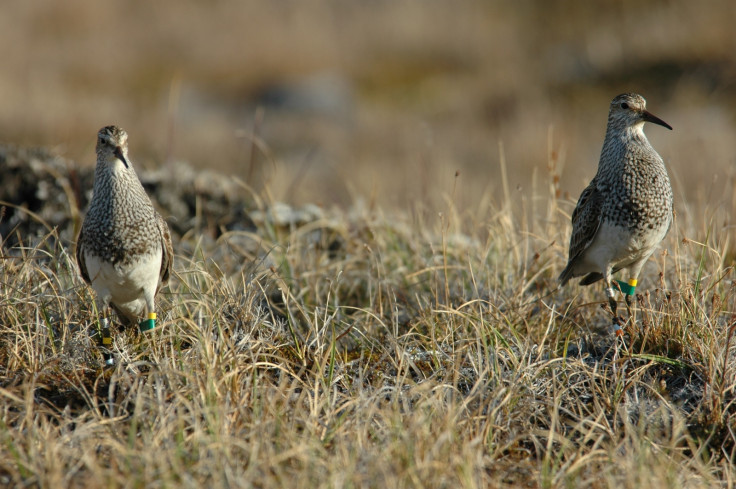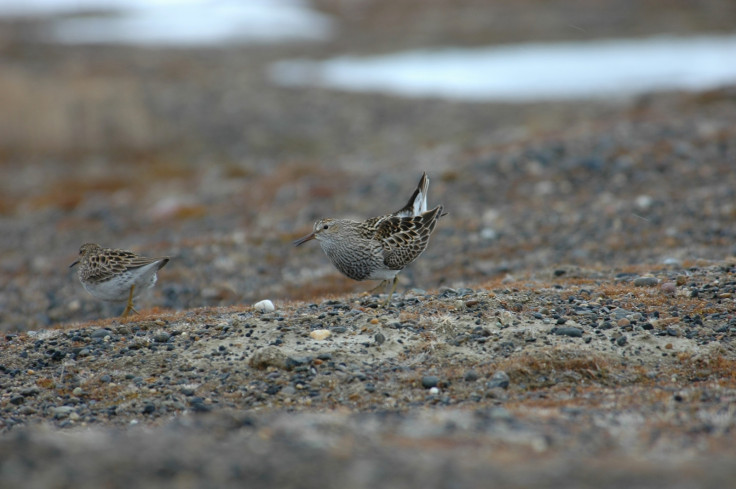Meet the migratory bird that goes the extra mile for sex
Male pectoral sandpipers have more chances of producing offspring by visiting many breeding sites.
Male pectoral sandpipers can travel thousands of kilometres during mating season to encounter as many female partners as possible. This is the first time that this type of nomadic reproductive behaviour has been documented in birds.
The pectoral sandpiper is a polygynous specie that winters in the southern hemisphere but breeds on the shores of the Arctic Ocean. Like in other similar species, the competition to access fertile females is intense. Only a few males tend to mate successfully, and this leads to strong sexual selection.
Visiting different breeding sites could increase the probability of males reproducing, but few studies have investigated whether male migratory birds actually do this.
In the research published in the journal Nature, scientists have tracked down male pectoral sandpapers arriving at a known breeding location in northern Alaska - a site called Barrow. They discovered that the birds then moved through a considerable part of the entire species' breeding range to visit as many as 23 additional potential breeding sites.

Males who don't need much sleep
The scientists used satellite-based telemetry to monitor 60 pectoral sandpipers during the 2012 breeding season. They found out that only 10 males stayed on or near the Alaska breeding site where they had initially arrived - within approximately 3km - during the entire breeding season. The rest flew an average of 3,000km over four weeks to visit other breeding sites. One particular male even covered a distance of 13,045km.
These findings suggest that males do not have a final breeding destination when they set off during breeding season. Instead, they move around from one site to another to increase their mating opportunities in a single breeding season.

This has implications in terms of sexual selection. Robust birds that sleep less in order to fly the long distances between breeding sites may be favoured. They may be able to mate more, with a greater number of geographically dispersed females.
This means that pectoral sandpipers are less likely to genetically diversify into distinct sub-populations. Offspring in different regions of the Arctic share the genetic material of those birds that were able to travel great lengths to mate. This might make it less able to adapt to local changes, an information that is important for conservationists to take into account.
© Copyright IBTimes 2025. All rights reserved.






















